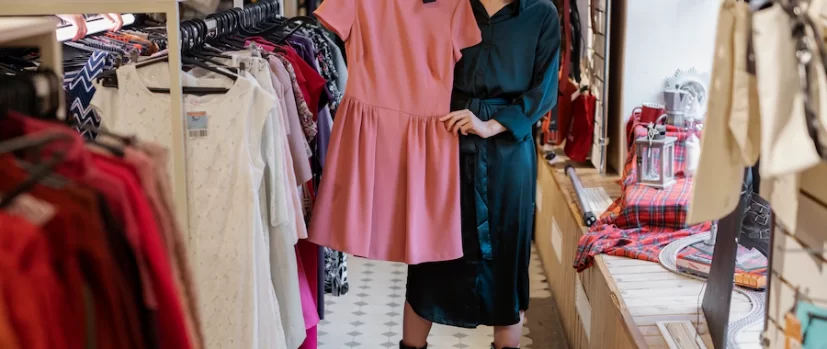Reviving Fashion History How Vintage Clothing Stores Preserve Style Eras
In a world where fashion trends come and go in the blink of an eye, vintage clothing stores stand as time capsules, preserving the essence of different style eras. These stores are not just places to shop; they’re portals that transport us back to the elegance of the 1920s, the rebellion of the 1960s, and the free spirit of the 1970s. In this blog, we’ll delve into how vintage clothing stores play a crucial role in reviving fashion history and keeping the legacy of style eras alive.
The Nostalgic Appeal Of Vintage Fashion:

Vintage clothing isn’t merely about wearing old clothes; it’s about embracing the stories they carry. Each garment holds a narrative of the time it was born in, the cultural influences that shaped it, and the social shifts that defined it. Vintage clothing stores are treasure troves filled with these stories, waiting to be rediscovered.
When you step into a vintage store, you’re greeted by an array of styles that span decades. The delicate lace of the Victorian era, the flapper dresses of the Roaring Twenties, the bold prints of the 1960s, and the oversized blazers of the 1980s all coexist, allowing shoppers to touch and experience the essence of bygone eras.
Preserving Fashion History Through Curation:
Vintage clothing stores are more than just retail spaces; they are curated galleries of fashion history. Store owners and collectors meticulously handpick pieces that exemplify the aesthetics of specific eras. This Curation process involves identifying key trends, silhouettes, and materials that defined a particular time.
For instance, a well-curated vintage store might offer a collection of ’70s bohemian maxi dresses, complete with floral patterns, flowing fabrics, and fringe details. These carefully selected pieces become a living embodiment of the 1970s’ free-spirited attitude, enabling us to reconnect with the past.
Educating Through Fashion:
Vintage clothing stores are not only about selling clothes but also about educating shoppers. When you step into these stores, you’re not just browsing racks; you’re entering a learning experience. Store owners and staff often share insights into the history behind each piece, helping customers understand the context and significance of the garments.
Imagine trying on a flapper-style dress from the 1920s. The store attendant might regale you with stories of the Jazz Age, the emergence of women’s liberation, and the revolutionary changes in fashion during that time. This educational element adds depth to the shopping experience, fostering a deeper connection with the clothes and the eras they represent.
Influence On Modern Fashion:
Fashion is cyclical, with trends from the past often making a comeback in contemporary styles. Vintage clothing stores play a pivotal role in influencing modern fashion by reintroducing iconic elements from different eras. Designers frequently draw inspiration from vintage garments, reimagining classic silhouettes with a modern twist.
For example, the resurgence of high-waisted jeans, oversized blazers, and tie-dye prints in recent years can be attributed to the influence of vintage fashion. By showcasing these trends in their stores, vintage clothing enthusiasts contribute to the cycle of fashion, bridging the gap between past and present.
Creating Sustainable Fashion Choices:
In an era of fast fashion and mass production, vintage clothing stores offer an alternative that aligns with sustainable values. By opting for vintage pieces, shoppers contribute to reducing the demand for new production, which can have harmful environmental impacts. Vintage clothing is the embodiment of recycling and repurposing – a concept that resonates with the growing movement toward eco-conscious living.
Conclusion:
Vintage clothing stores are more than just retailers; they are guardians of fashion history. Through their curation, education, and influence, these stores keep the legacy of style eras alive. Stepping into a vintage store is like stepping into a time machine that allows us to embrace the elegance, rebellion, and creativity of the past. As we explore these fashion havens, we honor the stories and styles that have shaped our world.








